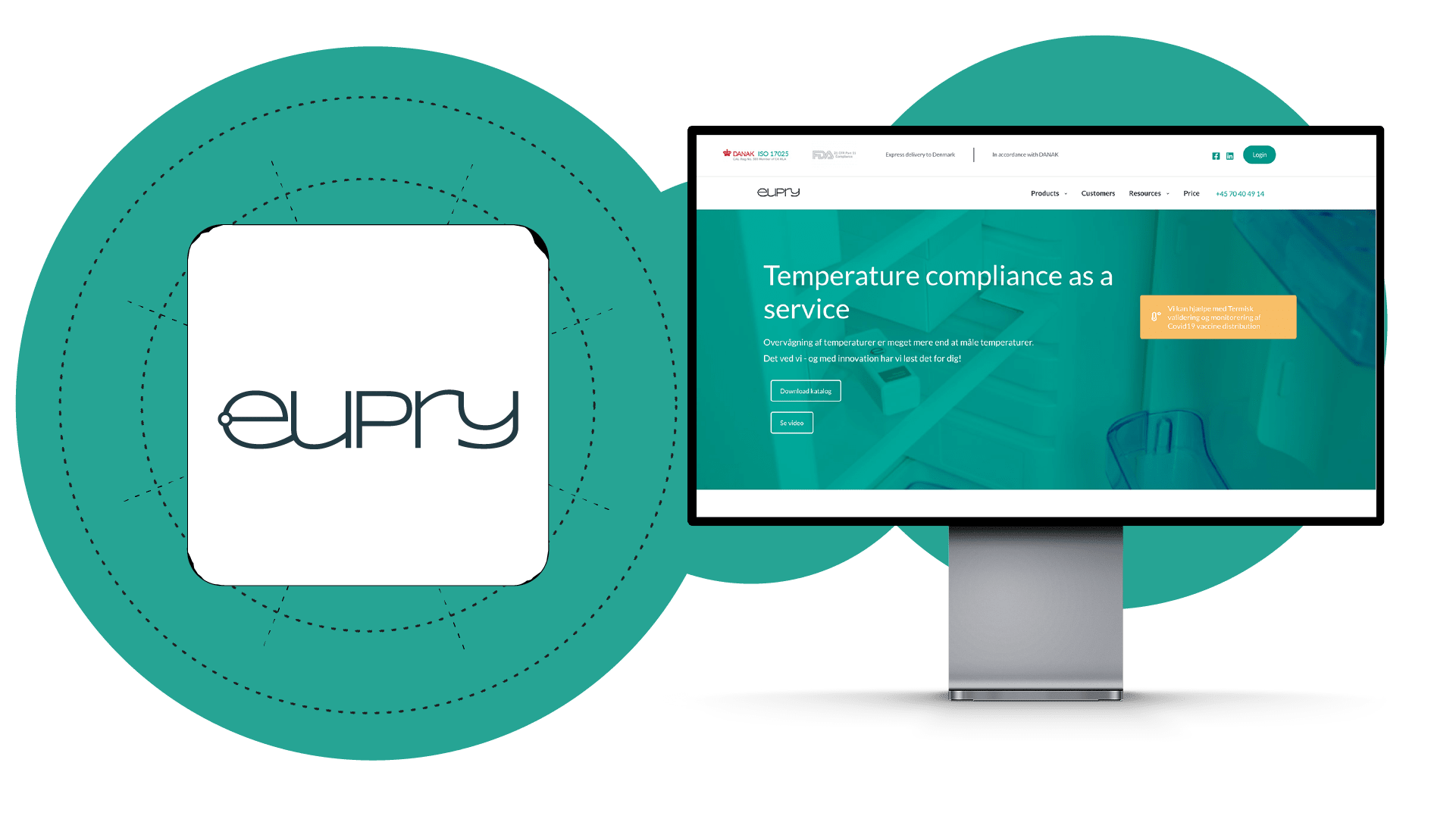Success story: How Eupry used revenue attribution to double their Sales KPIs with the same ad spend
Many B2B companies continue working on and closing deals ‘offline’. Where personal contact and meetings prove an invaluable asset for pushing leads over the line.
But even these traditionally ‘offline’ companies are growing their digital footprint. With prospects browsing websites, consuming content, and engaging with paid ads, the competitive landscape has quickly become a digital one.
Eupry is one of these companies. Though, with their expanding digital marketing presence, they needed insights into whether these were working or not.
They looked to Dreamdata for a solution, trusting the platform to take care of the data-crunching and visualizing the results on easy-to-read dashboards. With these insights, the Eupry team has been able to grow their key KPIs with newfound confidence and certainty.
Key results Eupry has achieved with Dreamdata so far:
Uncovered what content and paid channels actually generate revenue.
Learned that their Google Display Ads underperform and are adjusting spend accordingly.
Double their Sales metrics whilst maintaining their ROAS and CLTV/CAC.
Want to see results for yourself?
“Dreamdata has helped us understand our revenue flows and move faster towards more leads!”
About Eupry
Eupry provides a complete portfolio of solutions to monitor and perform validation of temperature, Co2, humidity and differential pressure for regulated industries, such as the Laboratory, Pharmacy, Healthcare, Pharma, and Food industries.
Traditional approaches in terms of temperature monitoring are demanding and require many resources that prevent companies from re-investing their funds into achieving higher results. When it comes to temperature compliance, Eupry has the most innovative and stable solution on the market.
Eupry can help companies save 80% of time spent on running their monitoring solution with easy installation, wireless data loggers, and with a user-friendly, remote monitoring, ISO accredited yearly calibration system. Eupry can save up to 30 hours a year per monitoring point, time which in every circumstance would be better spent elsewhere in the organisation.
Adam Hartmann-Kruckow is one of the co-founders of Eupry and currently leads their Growth Team. He primarily monitors their growth KPIs, which includes MQL-SQL-DEALS-CLOSED deals, known business vs. new customers, and length of contracts.
Their current length of contracts currently lies around the 3-year mark.
“Ultimately,” Adam says, “my main focus goes to the impact of our overall revenue growth. At the moment that growth mainly comes from organic channels, and steadily hovers at around 50% on an yearly basis.”
The challenge: What traffic is actually influencing Eupry’s pipeline and revenue?
Eupry primarily works with customers in the pharma and life science industries. Because of that, their conversion mainly happens offline. “Nevertheless, through organic, and to a lesser extent paid traffic, we could see how important our online presence was,” says Adam.
So Eupry knew their online presence had some degree of influence on their pipeline and revenue. The problem was that they had no idea which channels in particular were helping drive pipeline and revenue, especially in the case of Google ads and organic traffic. This made it very difficult for them to scale efforts up and down with confidence.
Adam concluded that they needed a solution which would enable them to deep-dive into the campaigns to boost or shut down. Not a wholly unfamiliar challenge in the world of revenue attribution.
Another Dreamdata success story.
The solution: Dashboards that clearly connect the dots between your activities and revenue
“Dreamdata has become our main source of truth when we decide what efforts to optimize and which to stop.”
Adam and his team had two primary types of insights they were looking to uncover:
What paid Google campaigns were driving revenue and,
What content was guiding their prospects into the pipeline
With Dreamdata’s revenue attribution and data platform, Eupry is able to find the answers to both those queries. So far, the following two Dreamdata features have proven to be the most useful to them:
The campaign performance matrix
“This paid ads dashboard has given us a great overview of all our campaigns and ad groups,” Adam says. The dashboard is great as-is for all the standard metrics you’re looking for when it comes to paid ads, such as ctr, cpc, impressionis, etc.
But where it truly stands out is that it shows the attribution towards deals, revenue, and ROAS metrics for each and every single individual campaign. This allows Eupry to see and compare how campaigns are performing at different pipeline stages. And so helps us optimise accordingly.
The landing page performance matrix
The landing page performance dashboard has very similar benefits to the campaign performance dashboard, but focuses on organic traffic and content. It’s a great place to look if you want to find out more about the performance of your content, how (and if) you should adjust your SEO strategy, and more.
With these two dashboards, Dreamdata has become Eupry’s main source of truth when it comes to understanding paid and organic performance. They’re now able to decide which efforts they should scale up or down with confidence.
“For instance, Dreamdata’s analytics have shown us how ineffective our previous display ads campaigns have been in generating pipeline, even less so revenue,” Adam says. “This has meant going back to the drawing board with display ads. It’s also shown us the content verticals that are resonating most with our customers, helping us much better plan our content calendar.”
The results: 2x Sales KPIs through scaling content and ads that work and dropping those that don’t
By using Dreamdata, Adam and his team have already uncovered a lot of incredibly powerful and impactful things. They’ve learned that:
Organic content is actually generating a lot of revenue and pipeline.
Display advertising? Doesn’t work for Eupry. Which makes it a huge area to not only save costs, but also use said costs and efforts to increase their content marketing instead.
Focusing on a few keywords and owning niches is proving to be very effective. Which they can now claim with absolute certainty. In essence, it’ll make it a lot easier to commit to a hyper-specific selection of verticals.
“Everything is connected, which means that more visibility has moved us to be much more aggressive in our predictions,” Adam says. Eupry has also moved a lot more capital into their advertising spend.
“Which ultimately has turned out to double our sales metrics.”
With Dreamdata, Adam’s team has managed to x2 their sales metrics while maintaining their ROAS and CLTV/CAC on top of that. “Which means we still haven’t reached our maximum spending point, which is fantastic.”
All in all, Eupry is the definition of a revenue attribution success story. And we can’t wait to see what they do next.
Interested in running your own campaigns and content through Dreamdata to see what pops out on the other end? Try Dreamdata free today (or drop us a line!).




